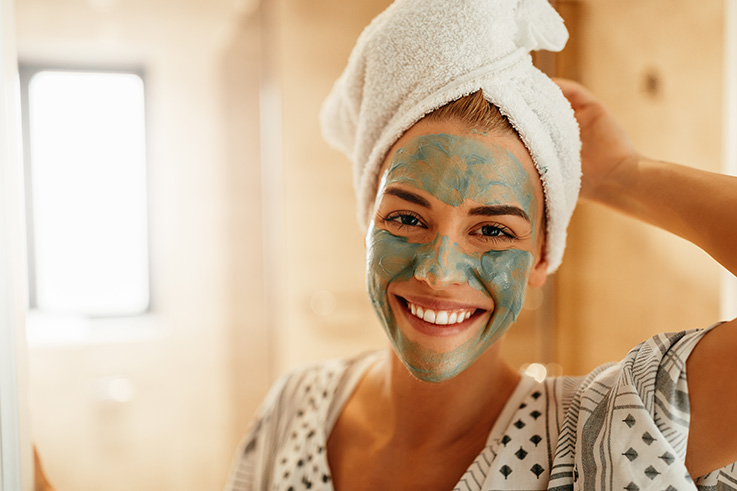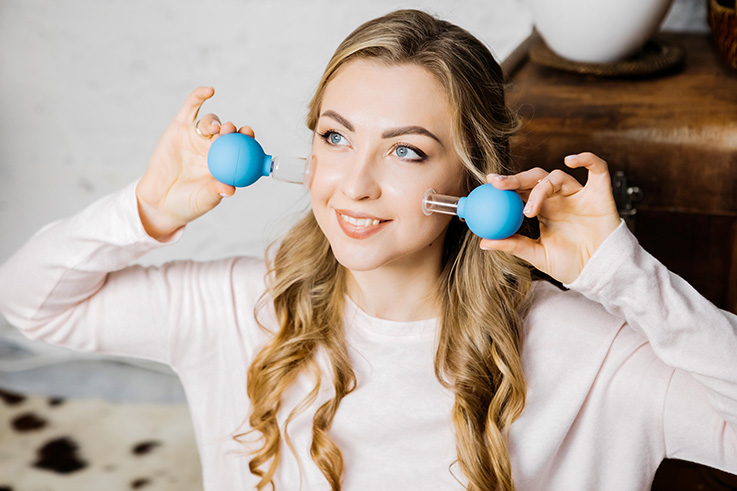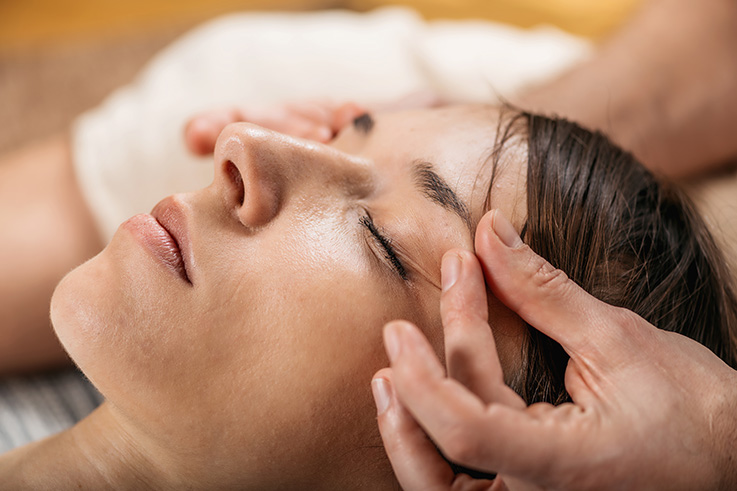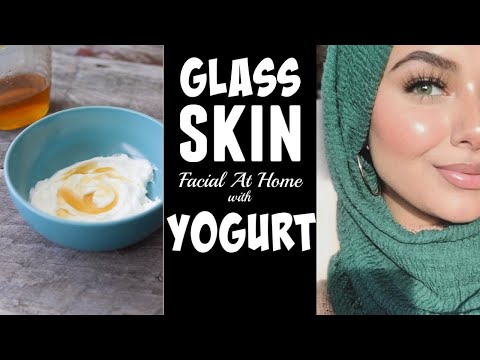Just about everyone is familiar with yogurt. This fermented milk product is consumed all over the world, not only for its flavor, but also because of its high protein, calcium, vitamin, and probiotic content. However, in addition to being packed with nutrients that boost general health, yogurt also offers a number of benefits when applied topically, which is exactly why yogurt face masks have become so popular.
Contents
Benefits of Yogurt for Skin
While your skin will still benefit from yogurt that you consume, applying it topically gives the ingredient a direct path to your skin cells. Once there, yogurt has the ability to bring about a number of different changes:
Treats Acne-Prone Skin
There are some great acne treatments out there, but many make use of harsh ingredients that can often leave you dealing with side effects. If you’ve been looking for a natural alternative, a yogurt face mask may be the way to go.
Yogurt is a natural source of lactic acid [1]. This alpha-hydroxy acid (AHA), which can be found in numerous skin care products, keeps the pores clear to prevent blockages, and therefore acne breakouts. The probiotics in yogurt help too by soothing inflammation and increasing the amount of good bacteria on the skin, which reduces the levels of acne-causing bacteria. And don’t worry – yogurt doesn’t clog pores!

Exfoliates Dead Skin Cells
As mentioned, yogurt contains lactic acid, a popular exfoliating ingredient. A yogurt face mask will clear your face of dead skin, leaving your complexion looking brighter and clearer. Adding a yogurt mask to your skincare routine regularly will also speed up cell turnover, giving you beautiful skin that looks fresher and younger in the long run.
Lightens Dark Spots
Lactic acid is an ingredient often recommended for hyperpigmentation, making a yogurt face mask a good alternative. Its exfoliating effect will help to fade and lighten dark spots, leaving your skin tone looking even and balanced.
Soothes and Calms Irritation
Probiotics are known for having an anti-inflammatory effect on the skin, capable of quickly soothing redness and irritation. Make your mask with a yogurt that’s rich in active probiotics and your skin will be able to benefit from this too.
Increases Skin Moisture Levels
Studies have found that a yogurt face mask is able to boost skin moisture levels [2]. It all comes down to its thick and creamy texture, which locks in moisture to prevent it from evaporating away.
Tightening and Firming Effects
Turns out, yogurt face masks have some powerful anti-aging effects too. This is partly down to their AHA content, which speeds up cell regeneration to give the complexion a smoother and brighter finish. However, the probiotics help as well – research shows that probiotics are able to significantly reduce wrinkle depth, while also boosting elasticity [3].

Even better, it’s believed that the natural antioxidants found in yogurt, which include vitamin D, are able to neutralize free radicals in the skin. These are responsible for everything from fine lines to sagging wrinkles, so keeping them away will help to preserve a more youthful appearance. It’s exactly what you need for great skin!
The Best Type of Yogurt for a Face Mask
Before you start eagerly whipping up your face mask, you need to make sure that you’re using the right type of yogurt.
Flavored yogurts should be avoided. While they won’t do any harm, they’re also not as beneficial as plain Greek yogurt. Thanks to its thicker texture, plain Greek yogurt is also easier to apply. Any other type of plain yogurt would work well too.
It’s also worth noting that yogurt made from goat’s milk contains more calcium, protein, and vitamin A than one made from cow’s milk. On the other hand, a cow’s milk yogurt has higher levels of vitamin B12, folic acid, and selenium. Both work well in a mask, but you may want to alternate the type of yogurt that you use to maximize on benefits.
How to Make a Yogurt Mask
Don’t worry if you’re not a whiz in the kitchen – a yogurt face mask is easy to make. Let’s start with the most basic yogurt face mask recipe:
- 2 tablespoons of plain Greek yogurt
- 1 tablespoon of raw honey
- Mix the two together, either by hand or in a food processor, and you’re good to go!
Adapting a Yogurt Face Mask to Your Skin Type & Concerns
Now to make things a little more interesting. While that simple yogurt face mask recipe will bring your skin all of the benefits mentioned above, you can also adapt it to target any specific concerns that you may be dealing with. Here are a few examples:
Oily Skin
Add some turmeric powder and green clay to your yogurt face mask mix. These ingredients will detoxify your skin, reduce inflammation, and rebalance sebum production. If you’re also experiencing breakouts, a drop of lavender essential oil can work wonders.
Dry Skin
Mix some olive oil into your yogurt face mask for some extra moisture and hydration. You only need to use about one or two teaspoons of the oil. You could also add in some mashed avocado. Again, this is a great ingredient for hydrating and lubricating the face.
Dull Skin
Adding one tablespoon of fresh lemon juice to your yogurt face mask will treat your face to a dose of citric acid. This AHA is great for brightening a dull complexion. You could also add in some green tea powder for additional antioxidant benefits, or mix in some oats to turn your mask into a gentle and nourishing face scrub.
Sunburned Skin
Aloe vera gel is a go-to for burnt skin, and this can be incorporated into your Greek yogurt mask too. Both aloe and yogurt are known for being soothing, so this is a combination that will provide instant relief.
Aging Skin
Antioxidants are what you need to tackle aging, and while yogurt already contains some, adding a handful of crushed rose petals to your mask will give you an additional boost. Mashed berries, such as strawberries or blueberries, are a good source of antioxidants and vitamins too.
How to Use a Yogurt Facial Mask
Once you’ve mixed your yogurt face mask together, apply it evenly onto your entire face. Bring this down to your neck and chest too. A thin layer is all you need, but you may want to go for a thick layer if your skin is particularly dry or damaged.

Leave the mask to sit on your skin for about 15-20 minutes. Then, use warm water and a soft washcloth to clear the mask off your face. If you’re dealing with burnt skin, then cool or lukewarm water would be better.
Once your face is clean, pat dry and then follow up with your favorite face cream.
Are There Any Side Effects?
Being a natural and gentle ingredient, yogurt face masks don’t usually come with side effects. They can also safely be used on all skin types.
The exception would be if you have a dairy allergy. This doesn’t mean that you have to miss out – there are plenty of plant-based yogurts available too, such as almond or coconut.
FAQs
Is yogurt a good face mask?
Yes, yogurt is a great face mask! It has a number of skin-boosting benefits, without any side effects.
Can I put yogurt on my face every day?
It’s best to use yogurt on your face just once or twice a week. Even if you go for a high-quality Greek yogurt, it will still affect your skin’s microbiome. Doing this too much could lead to irritation.
Does putting yogurt on your face help with acne?
Yes, a Greek yogurt face mask can help with acne in a few ways. It will calm inflammation, fight acne-causing bacteria, and keep your pores clear.
Summary
No matter the skin concerns you may be dealing with, a yogurt face mask can help. Even better, they’re so simple and inexpensive to make, and the way in which they can be customized so easily means that you can treat your skin to a different selection of nourishing ingredients each week. If this isn’t something you’ve tried yet, give it a go – chances are that it’ll soon become a regular part of your weekly skincare routine.
References
[1] https://pubmed.ncbi.nlm.nih.gov/17656910/
[2] https://www.ncbi.nlm.nih.gov/pubmed/22152494
[3] https://pubmed.ncbi.nlm.nih.gov/26428734/
